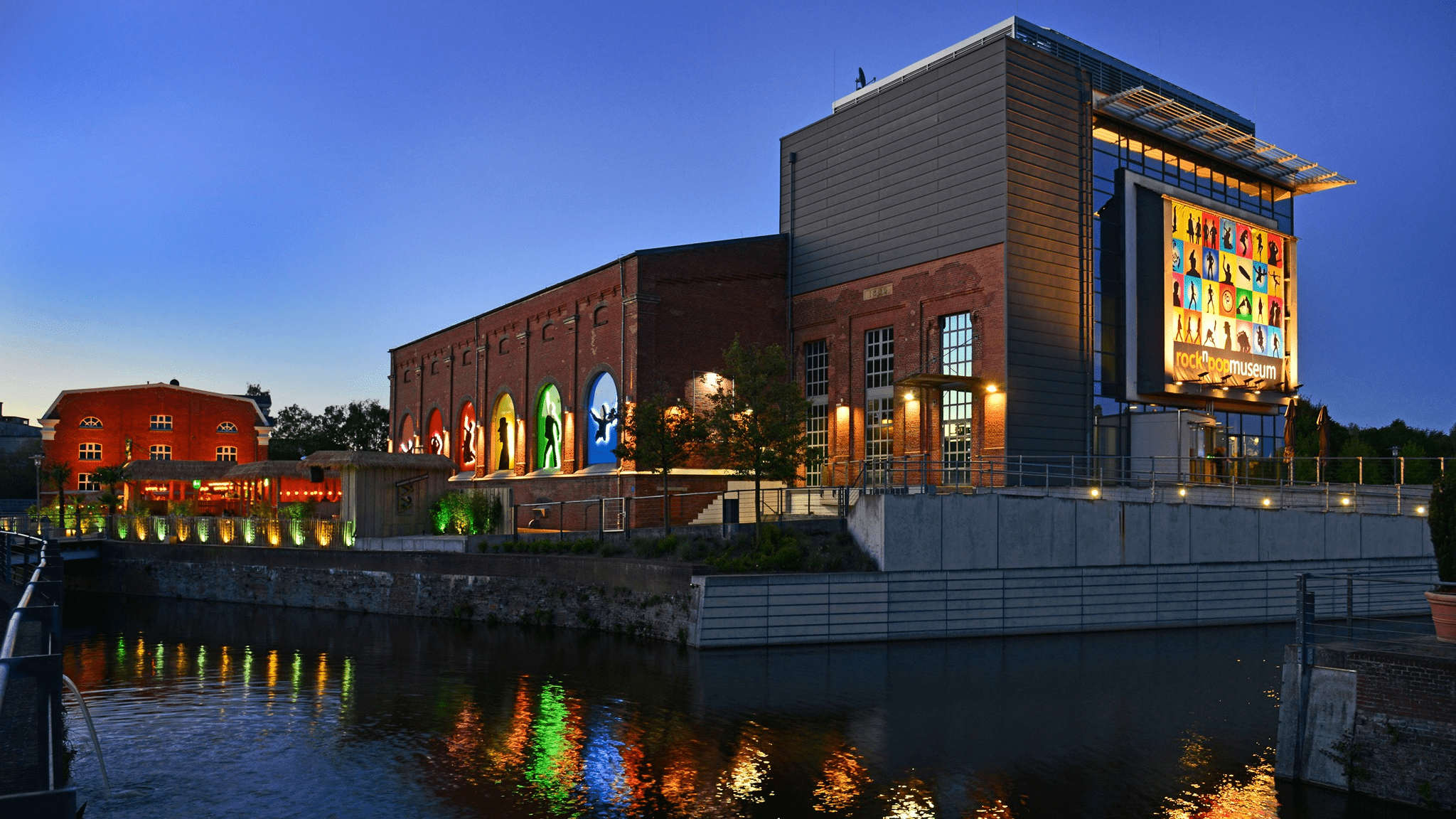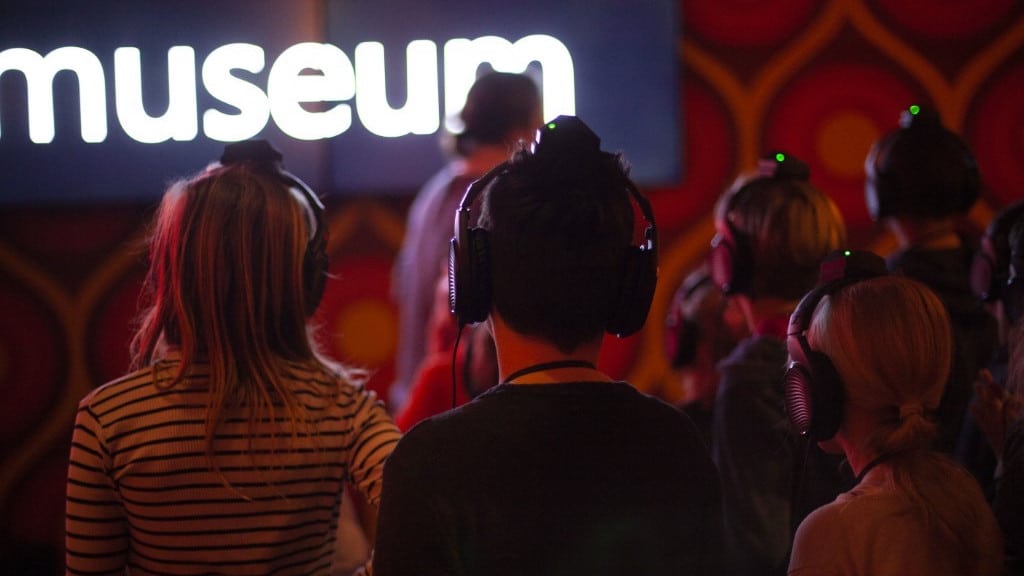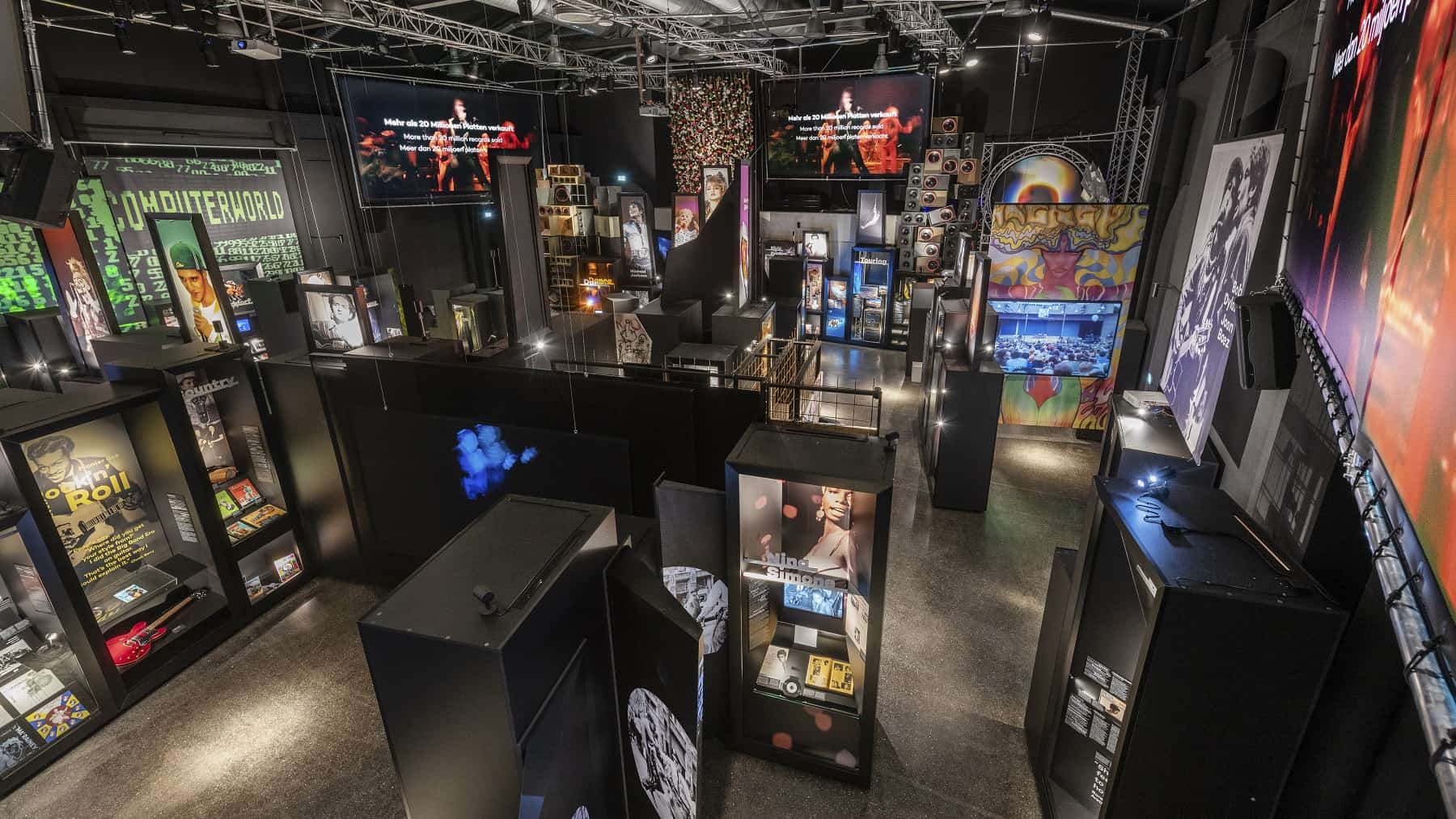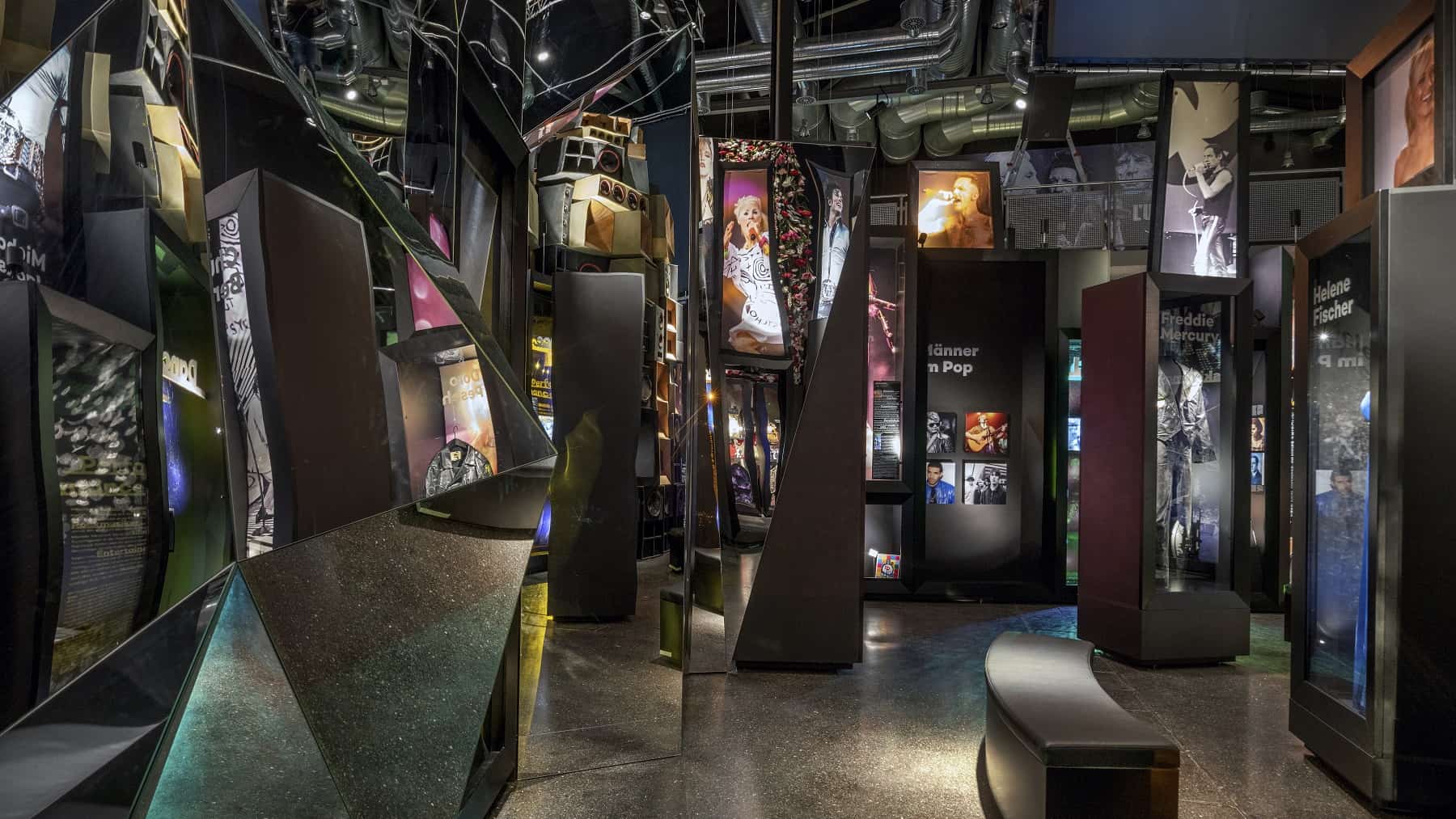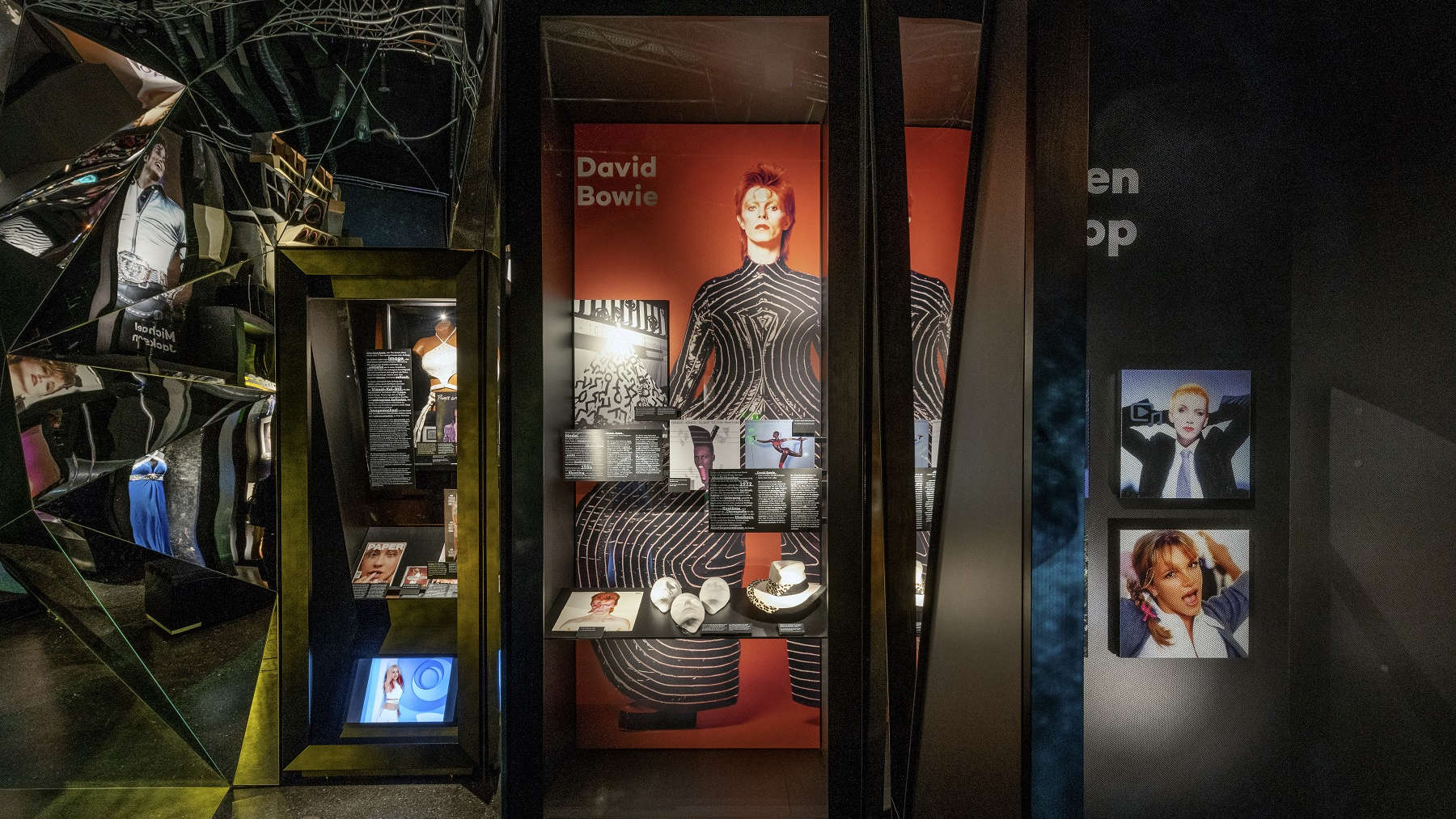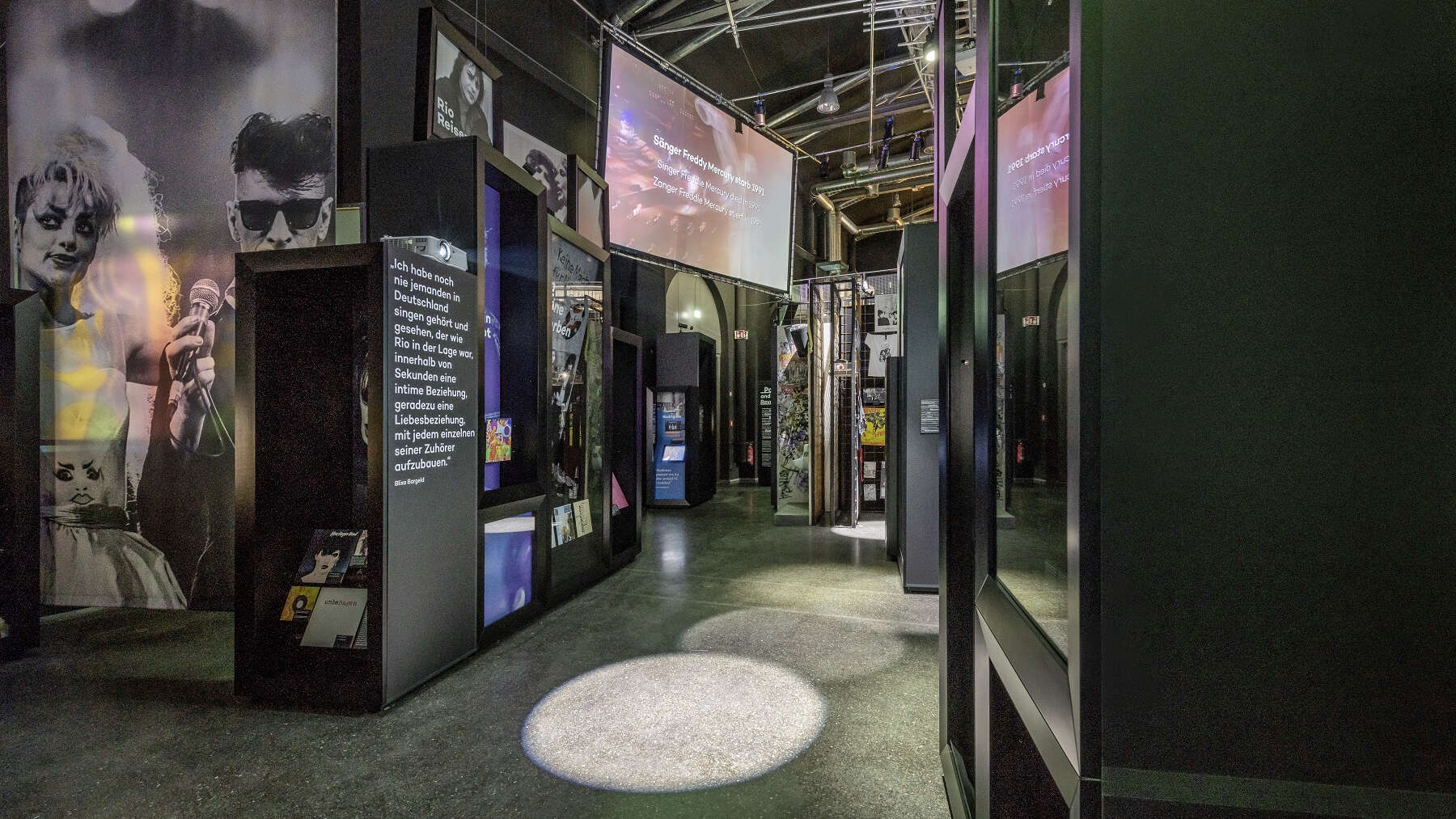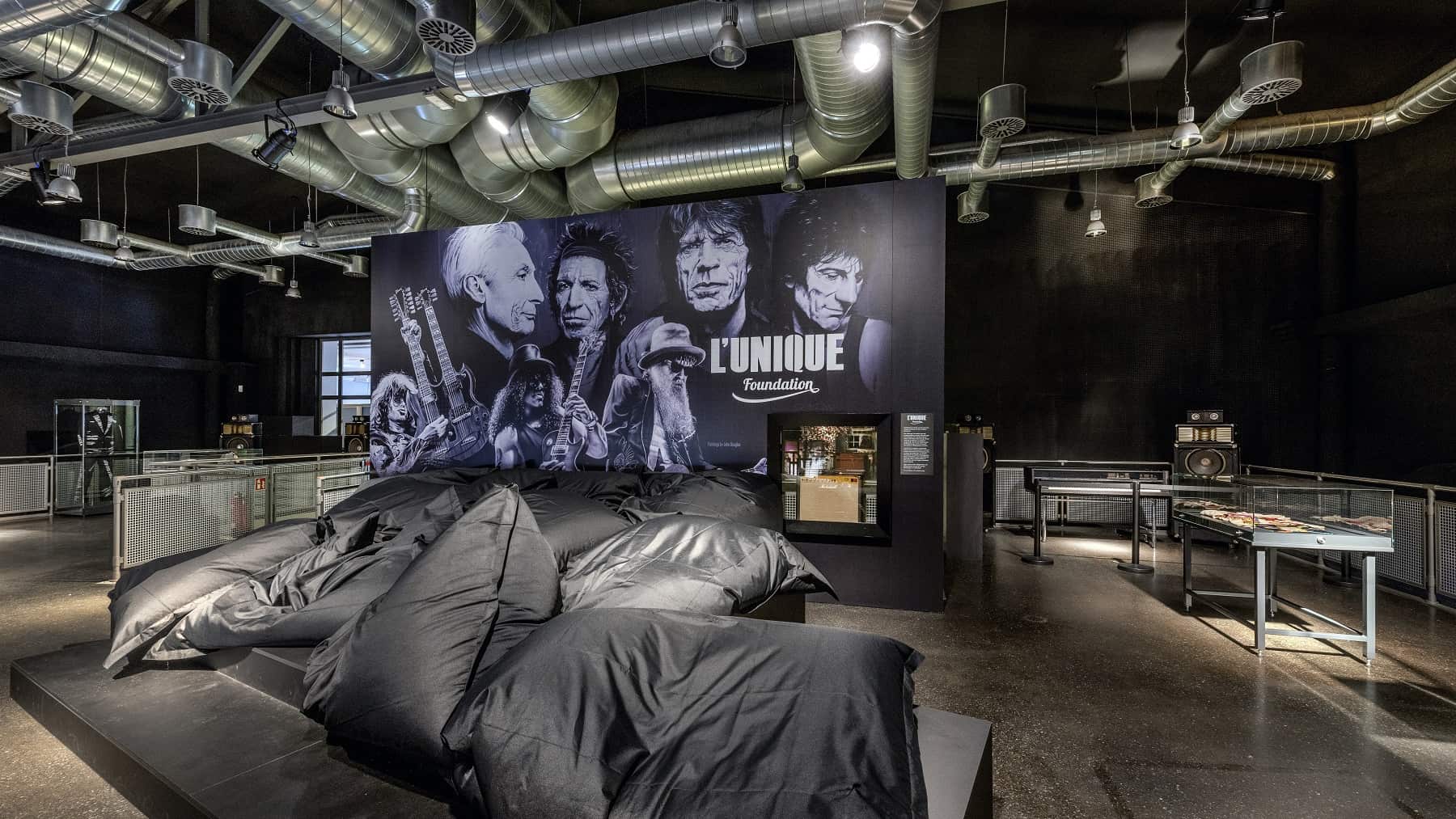The new permanent exhibition at the rock’n’popmuseum Gronau is an interactive journey through music history with 3D sound.
To capture a theme as complex and multi-layered as rock and pop music in an exhibition and thereby reaching a transgenerational audience is not a simple undertaking. It was achieved by means of a concept that is based on educative as well as on emotional elements, that makes use of classic exhibits as well as of innovative sound technology, that stages the mainstream as well as subcultures. With a dense diversity of topics and technical media, in systematic and in playful ways, a wide spectrum of information about music and experience of music is featured. It is an approach that fully measures up to the eclectic development of rock and pop music.
The rock’n’popmuseum in Gronau, located in the Münster region in North Rhine-Westphalia directly at the Dutch border, has reworked its permanent exhibition and reopened it at the end of 2018. It is an exhibition that is a multimedia and interactive experience of the iridescent, multifaceted nature of rock and pop music throughout the decades and genres.
As a congenial welcome, rock legend Udo Lindenberg, Gronau’s most famous son, greets visitors on a multimonitor installation at the entrance. In closely sequenced audio zones and film areas, in front of touchscreen stations, of showcases and vitrines, they are guided by the interactive audio system usomo on an adventurous tour across years, places and styles of music history. Focal points are main characteristics of rock and pop such as stage performance or musicians as idolised stars, but also musical styles of various subcultures like punk and techno, from the LGBTQ scene and the civil rights movement are cast a light on. The concept is designed to show the development of western music of the last 150 years, since the beginning of musical reproducibility, in wide range but also in a compact format, addressing all generations. This ambitious goal was reached with an objectively systematic yet also subjectively compiled selection of exhibits, musicians and music styles along with an intelligent palette of media encompassing simple text to 3D sound.
A multimedia tour through times and trends
The realisation of the concept, under the creative lead of the architects of Studio Andreas Heller from Hamburg, primarily focuses on a didactic and at the same time emotional way of information transfer. Throughout the Turbinenhalle, a huge rectangular space of about 800 square metres, a large number of touch monitors, vitrines with exhibits and songs, showcases with film projections and photos is distributed, environed or connected by interactive audio zones. Visitors move freely between these audio zones in which the sound, synced with the visual elements in the space, seems to fluidly follow their movement. On the headphones that the visitors wear, music or audio texts play out that let them dive into the respective topics in an acoustically immersive way. The headphones communicate with senders distributed throughout the space that precisely track their position and play in real time the individual audio tracks stored on an accompanying device. A visual symbol marks points where additional information can be retrieved manually on the device.
On the tour, visitors explore the chronological and regional development of musical styles and listen to stories about the evolution of rock and pop music. From the early forms of U.S. pop music with jazz (Louis Armstrong) or rock’n’roll (Chuck Berry), festivals like Woodstock or the Essener Songtage and legendary places like the clubs Studio 58 in New York or the SO36 in Berlin to currents such as the Neue Deutsche Welle (Ideal, Die Tödliche Doris) or the Hamburger Schule (Tocotronic, Jan Delay) as well as YouTube-Stars – it is an audible and visual kaleidoscope of rock and pop music that is being presented here in a colourful bouquet of costumes and props, records and CDs, text plates and images, films and documents.
Musicians, bands, their styles and their stories are portrayed in personal theme areas like, for example, “performance” (among them Pink Floyd, Kiss, David Bowie, Grace Jones and Madonna), original concert recordings from the 80s play on old tube televisions, contrasting, LCD flatscreens show current interviews with music makers and producers, completed by text and photos of their activities. Needless to say, Udo Lindenberg appears several times. Visitors learn key facts about the breakthrough of the Beatles in 1960 in Hamburg as well as in which way exactly modern music styles spread so quickly through technological inventions like radio and recording media.
From the phonograph to interactive 3D sound
The stations and audio zones are positioned in high density. For the team of the 3D audio system usomo, this tight placement was a special challenge. The operation of the system is based on the interactive real-time communication of the tracking module on the headphones with senders in the space that closely follow the paths of the visitors and accurately transmit to them their individual soundscapes. The single audio zones are relatively small – some of them are merely of one square metre – and the numerous glass vitrines, moveable walls and exhibits constitute many obstacles for the transmission of the acoustic frequencies. But the entire space containing that many objects was successfully transformed into a coherent soundscape with correctly trackable audio zones.
Every half hour, a computer-steered show with film and sound play out, the “Pophimmel” (pop heaven). When it starts, the interactive sound on the headphones automatically turns off, the system switches to the stationary speakers in the space and switches back to the headphones after the show. This site-specific feature was developed by usomo in cooperation with Studio Andreas Heller and the rock’n’popmuseum, but it is also useable in other contexts, underlining usomo’s flexibility and potential for development. Just the same, the additionally available information on the devices, flagged by symbols on the walls and the vitrines, is a feature that was created in the framework of this project and that can be applied elsewhere.
A small special highlight is “History of Sounds”. On the floor, square fields mark key years in the historic development of sound technology, from the analogue to the digital. A song from the 19th century is played in five versions, five media and five qualities, all of which are typical for the respective time. Visitors experience not only the direct comparison of recording qualities of the phonograph (1877), shellac (1896), vinyl (1945), the CD (1980) and 3D sound (2018), but concurrently also the stylistic transformation throughout the epochs by means of one and the same music piece.
Avant-garde and research at the museum
Aside from this innovative permanent exhibition and changing themed exhibitions, the rock’n’popmuseum has several more highlights in store. The legendary recording studio of the German avant-garde band Can is now located here and made publicly accessible. When it was still housed at a former cinema in Cologne, Can produced eight studio albums at it between 1971 and 1978. Additionally, the rock’n’popmuseum is cooperating on a research project with the Zentrum für Populäre Kultur und Musik an der Universität Freiburg and the Hochschule für Musik Franz Liszt in Weimar. The research focuses on how popular music has been produced with novel musical instruments and recording studio technology since 1945 as well as how it is stored and collected on various types of media and devices, thereby becoming repeatedly audible and experienceable.
Press
Tubantia
rock’n’popmuseum in Gronau benoemd tot ‘Deutschlands Bestes Museum’
26 October 2020
Westfälische Nachrichten
„Deutschlands Bestes Museum“: rock’n’popmuseum als Benchmark für andere Häuser
15 October 2020
Professional System
Gänsehaut-Momente im rock’n’popmuseum Gronau
10 February 2020
MOZ
Popgeschichte: Ein Besuch in der Geburtsstadt von Panikrocker Udo Lindenberg
2 February 2020
Deutscher Musikrat – Deutsches Musik-Informationszentrum
rock’n’popmuseum Gronau ist nach einjährigem Umbau wiederöffnet
28 November 2018
Neue Musikzeitung
rock’n’popmuseum Gronau eröffnet nach Umbau neu
23 November 2018
Awards
Focus Money Deutschlandtest
Museums | Winner (poll-based)
2020
Credits
Website rock-popmuseum.de
Client rock’n’popmuseum, Gronau
Exhibition Architecture Studio Andreas Heller, Hamburg
Spatial sound system usomo by FRAMED immersive projects, Berlin
usomo tasks usomo sound system, spatial audio production
Duration permanent exhibition opened in November 2018
Photos 1–2 © rock’n’popmuseum, Mario Brand Photos 3–7 © rock’n’popmuseum, Julia Knop

